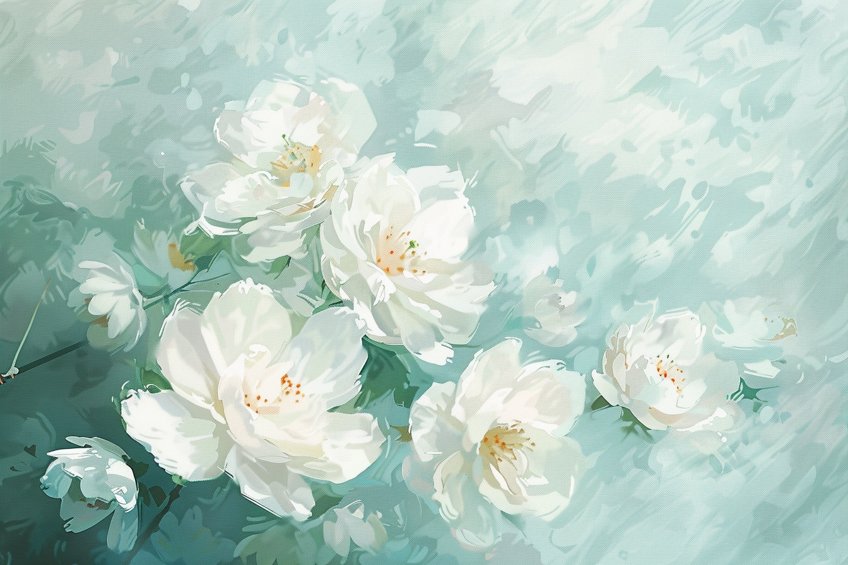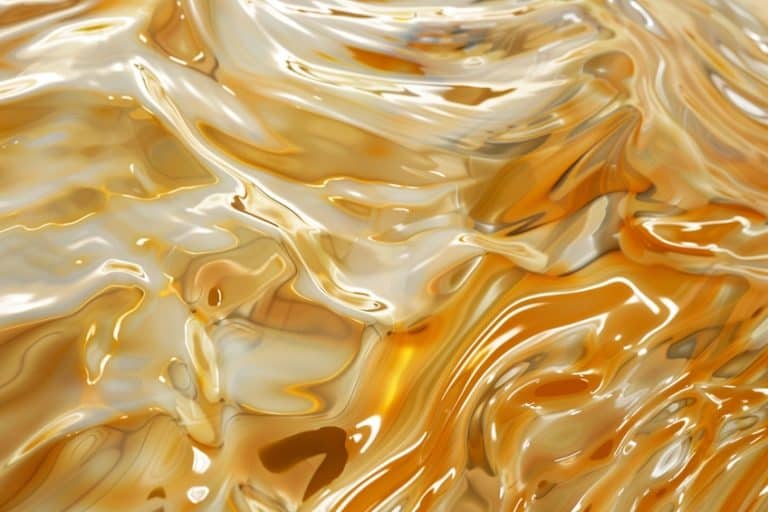20 Things That Are White – The Serenity of Snowy Hues
Welcome to a whimsical exploration of the world of white! In this captivating journey, we’ll unravel the mysteries and marvels of all things white. From the pristine snow-capped mountains to the fluffy clouds dancing in the azure sky, white embodies purity, serenity, and endless possibilities. Join us as we embark on a delightful adventure to discover the myriad manifestations of white in nature, art, culture, and beyond. So grab your imagination and let’s dive into the enchanting realm of things that are white!
Meaning of the Color White
In the vast spectrum of color symbolism, white stands as a beacon of purity, simplicity, and clarity. It embodies a sense of freshness and cleanliness, evoking feelings of innocence and perfection. White often serves as a canvas for new beginnings, offering a blank slate for creativity and possibilities. In various cultures, white is associated with weddings, symbolizing unity, peace, and the beginning of a new chapter in life. It also signifies illumination and enlightenment, reflecting the clarity of thought and spiritual purity. However, white’s meaning is not devoid of contrasts; it can also represent emptiness or sterility if used excessively. Overall, white transcends cultural boundaries, offering a universal language of purity and renewal in the kaleidoscope of human experience.

20 Interesting Things That Are White
Embark on a captivating journey through a spectrum of purity and elegance as we explore a curated list of white phenomena. From the majestic polar bears to the pristine glaciers, each item unveils the timeless allure and symbolic richness of the color white.
Beluga Whales
Beluga whales, characterized by their stunning white coloration, are majestic marine mammals inhabiting Arctic and sub-Arctic waters. Their white hue serves as camouflage in icy environments, aiding in hunting and evading predators. Additionally, their distinctive color reflects sunlight, helping regulate body temperature in frigid waters.
Belugas’ white appearance also symbolizes purity and grace in indigenous cultures, often revered as spiritual beings of the sea.
Trumpeter Swans
Trumpeter swans, boasting snowy white plumage, are North America’s largest waterfowl, known for their elegance and grace. Their white feathers provide insulation against cold temperatures, ensuring survival in their wetland habitats. Symbolically, the purity and regal stature of Trumpeter swans have made them iconic symbols of grace and tranquility in various cultures and folklore worldwide. Their presence signifies serenity and natural beauty in wetland ecosystems.

Limestone
Limestone, a sedimentary rock primarily composed of calcium carbonate, often manifests in shades of white and gray. Its white appearance stems from the accumulation of marine organisms’ remains over millions of years. Limestone’s versatility and durability make it a prized material for construction, sculpture, and architecture, lending timeless beauty to landmarks like the Great Pyramids of Giza and the Parthenon.
Its bright hue reflects light, giving buildings a radiant and ethereal quality.
Coconut Meat
Wisteria
Wisteria, renowned for its cascading clusters of fragrant blossoms, features delicate petals that often showcase shades of white, lilac, or lavender. The white wisteria flowers symbolize purity, grace, and gentle beauty, adding an enchanting allure to gardens, arbors, and landscapes. In various cultures, wisteria holds symbolic significance, representing long life, immortality, and the fleeting nature of beauty.
Its ethereal white blooms evoke a sense of tranquility and nostalgia, captivating admirers with their timeless charm and intoxicating fragrance.
Fantail Pigeons
Fantail Pigeons, distinguished by their extravagant plumage and distinctive tail feathers, exhibit a variety of color variations, including pure white. Bred for their ornamental qualities, fantail pigeons feature elegant white coats adorned with intricate feather patterns and textures. Symbolically, white fantail pigeons represent peace, purity, and freedom, often depicted in art, literature, and religious symbolism as messengers of hope and reconciliation. Their graceful flight and serene demeanor evoke a sense of harmony and grace, inspiring admiration and reverence across cultures.

Sheep
Sheep, adorned with fluffy coats of wool that range from creamy white to soft ivory hues, are iconic symbols of pastoral landscapes and agricultural traditions worldwide. Their white fleece provides warmth and protection against harsh weather conditions, making them valuable sources of wool for textiles and clothing. Symbolically, white sheep embody innocence, purity, and abundance, reflecting the pastoral idyll of rural life and the cycle of renewal in nature.
Their gentle demeanor and nurturing instincts inspire feelings of comfort, security, and connection to the natural world.
Teeth
Teeth, with their gleaming white enamel, play a crucial role in oral health, communication, and self-expression. White teeth signify vitality, hygiene, and overall well-being, contributing to a confident smile and positive self-image. Proper dental care, including regular brushing, flossing, and dental check-ups, helps maintain the natural whiteness of teeth and prevents discoloration or decay. Symbolically, white teeth convey youthfulness, vitality, and vitality, reflecting cultural ideals of beauty, health, and social status.

Great Egrets
Great Egrets, with their stunning white plumage and graceful stature, are majestic wading birds found in wetlands and marshes around the world. Their snowy white feathers serve as camouflage in the marshy habitats where they hunt for fish, amphibians, and small mammals. Symbolically, great egrets embody purity, tranquility, and elegance, often revered in various cultures as symbols of grace and spiritual enlightenment.
Their regal presence and delicate movements inspire artists, poets, and nature enthusiasts, evoking a sense of serenity and harmony with the natural world.
Arctic Wolves
Arctic wolves, renowned for their pristine white fur and resilience in frigid environments, are apex predators inhabiting the Arctic regions of North America and Eurasia. Their white coats provide camouflage against snowy landscapes, enabling stealthy hunting and survival in harsh conditions. Symbolically, arctic wolves embody strength, adaptability, and the spirit of the wilderness, revered in indigenous cultures as guardians of the polar realms. Their solitary nature and haunting howls evoke a sense of mystery and reverence, captivating imaginations with their timeless allure and primal beauty.

Magnolia Flowers
Magnolia flowers, celebrated for their exquisite beauty and enchanting fragrance, feature delicate petals in shades of white, pink, or creamy hues. White magnolia blossoms symbolize purity, dignity, and eternal love, gracing gardens, parks, and landscapes with their timeless elegance. In various cultures, magnolia flowers hold symbolic significance, representing resilience, beauty, and the cycle of life.
Their fragrant blooms inspire poets, artists, and gardeners, evoking a sense of serenity and renewal in the ever-changing seasons of nature.
White Jade
White Jade, a rare and precious gemstone revered for its luminous translucence and milky white coloration, holds deep cultural and spiritual significance in many traditions. White jade symbolizes purity, harmony, and inner peace, serving as a talisman for protection and spiritual enlightenment. Its smooth texture and ethereal beauty have made it a prized material for jewelry, sculptures, and sacred artifacts throughout history. White jade’s mystical allure and calming energy inspire meditation, healing, and spiritual growth, inviting harmony and balance into the lives of those who seek its timeless wisdom.

Peace Lilies
Peace Lilies, characterized by their elegant white flowers and lush green foliage, are beloved houseplants renowned for their air-purifying qualities and symbolic significance. White peace lilies symbolize purity, serenity, and renewal, bringing a sense of tranquility and harmony to indoor spaces. In feng shui and other spiritual practices, peace lilies are believed to enhance positive energy and promote emotional well-being.
Their graceful blooms and glossy leaves inspire a sense of serenity and connection to nature, nurturing the mind, body, and spirit with their gentle presence.
White Rice
White rice, a staple food in many cultures, is derived from the polished grains of rice plants, resulting in a clean, white appearance. Its neutral color makes it a versatile ingredient in a variety of cuisines, complementing dishes with its mild flavor and fluffy texture. White rice serves as a significant source of carbohydrates and nutrients, sustaining populations worldwide and forming the foundation of countless meals. Symbolically, white rice represents sustenance, nourishment, and cultural heritage, connecting communities through shared culinary traditions and rituals.

Glaciers
Glaciers, vast rivers of ice found in polar regions and mountainous landscapes, exhibit shades of white due to the reflection of sunlight off their icy surfaces. Their brilliant white hues result from the compression of snow over centuries, forming dense layers of ice that reflect and scatter light. Glaciers play a critical role in regulating Earth’s climate and freshwater resources, serving as reservoirs of freshwater and indicators of environmental change.
Symbolically, glaciers symbolize resilience, purity, and the awe-inspiring power of nature, inspiring reverence and contemplation of Earth’s geological wonders.
Polar Bears
Polar bears, iconic symbols of the Arctic wilderness, boast thick white fur coats that provide insulation against freezing temperatures and camouflage in snowy landscapes. Their white fur, actually transparent and hollow, traps air to insulate against the cold, while their black skin underneath absorbs sunlight to keep them warm. Polar bears are apex predators, relying on their keen senses and hunting skills to survive in their icy habitats. Symbolically, polar bears embody strength, adaptability, and the delicate balance of Arctic ecosystems, serving as ambassadors for conservation and climate action.

Marble
Marble, a metamorphic rock prized for its timeless beauty and luminous white coloration, forms through the crystallization of limestone under high pressure and temperature. Its white appearance results from the presence of pure calcium carbonate, often accented by intricate veining and patterns of minerals such as quartz and feldspar. Marble has been used for millennia in sculpture, architecture, and decorative arts, adorning monuments, palaces, and temples with its elegant presence.
Symbolically, white marble represents purity, luxury, and artistic mastery, inspiring awe and reverence for human creativity and craftsmanship throughout history.
Bones
Bones, the structural framework of vertebrate animals, exhibit a white color due to the presence of calcium phosphate minerals that form their dense and rigid composition. White bones serve as anchors for muscles and provide protection for vital organs, contributing to the body’s strength and stability. In various cultures, bones hold symbolic significance, representing mortality, resilience, and the cycle of life and death. Symbolically, white bones evoke contemplation of mortality and the impermanence of existence, reminding us of the interconnectedness of all living beings and the enduring legacy of the human experience.

As we conclude our exploration of things that are white, we find ourselves immersed in a world of purity, simplicity, and boundless inspiration. From the elegance of a wedding gown to the purity of a blank canvas awaiting an artist’s touch, white continues to captivate and inspire us in myriad ways. Whether it’s the blank pages of a book waiting to be filled with stories or the delicate petals of a jasmine flower, white whispers stories of purity, clarity, and endless possibilities. As we bid farewell to this enchanting journey, may we carry with us the beauty and wonder of white, reminding us to embrace simplicity, celebrate purity, and find inspiration in the blank canvas of life.
Frequently Asked Questions
What Are Some Examples of Natural Things That Are White?
Natural things that are white include snow, clouds, polar bears, arctic foxes, and certain flowers like lilies and magnolias, showcasing the diverse beauty found in landscapes, wildlife, and botanical wonders.
Why Do Some Animals Have White Fur or Feathers?
Animals like polar bears and arctic foxes have white fur to camouflage in snowy environments, helping them hunt and evade predators. Birds like swans and egrets may have white feathers for display purposes or to blend in with their surroundings.
In 2005, Charlene completed her Wellness Diplomas in Therapeutic Aromatherapy and Reflexology from the International School of Reflexology and Meridian Therapy. She worked for a company offering corporate wellness programs for a couple of years, before opening up her own therapy practice. It was in 2015 that a friend, who was a digital marketer, asked her to join her company as a content creator, and this is where she found her excitement for writing.
Since joining the content writing world, she has gained a lot of experience over the years writing on a diverse selection of topics, from beauty, health, wellness, travel, and more. Due to various circumstances, she had to close her therapy practice and is now a full-time freelance writer. Being a creative person, she could not pass up the opportunity to contribute to the Art in Context team, where is was in her element, writing about a variety of art and craft topics. Contributing articles for over three years now, her knowledge in this area has grown, and she has gotten to explore her creativity and improve her research and writing skills.
Charlene Lewis has been working for artincontext.org since the relaunch in 2020. She is an experienced writer and mainly focuses on the topics of color theory, painting and drawing.
Learn more about Charlene Lewis and the Art in Context Team.
Cite this Article
Charlene, Lewis, “20 Things That Are White – The Serenity of Snowy Hues.” Art in Context. February 28, 2024. URL: https://artincontext.org/20-things-that-are-white/
Lewis, C. (2024, 28 February). 20 Things That Are White – The Serenity of Snowy Hues. Art in Context. https://artincontext.org/20-things-that-are-white/
Lewis, Charlene. “20 Things That Are White – The Serenity of Snowy Hues.” Art in Context, February 28, 2024. https://artincontext.org/20-things-that-are-white/.











